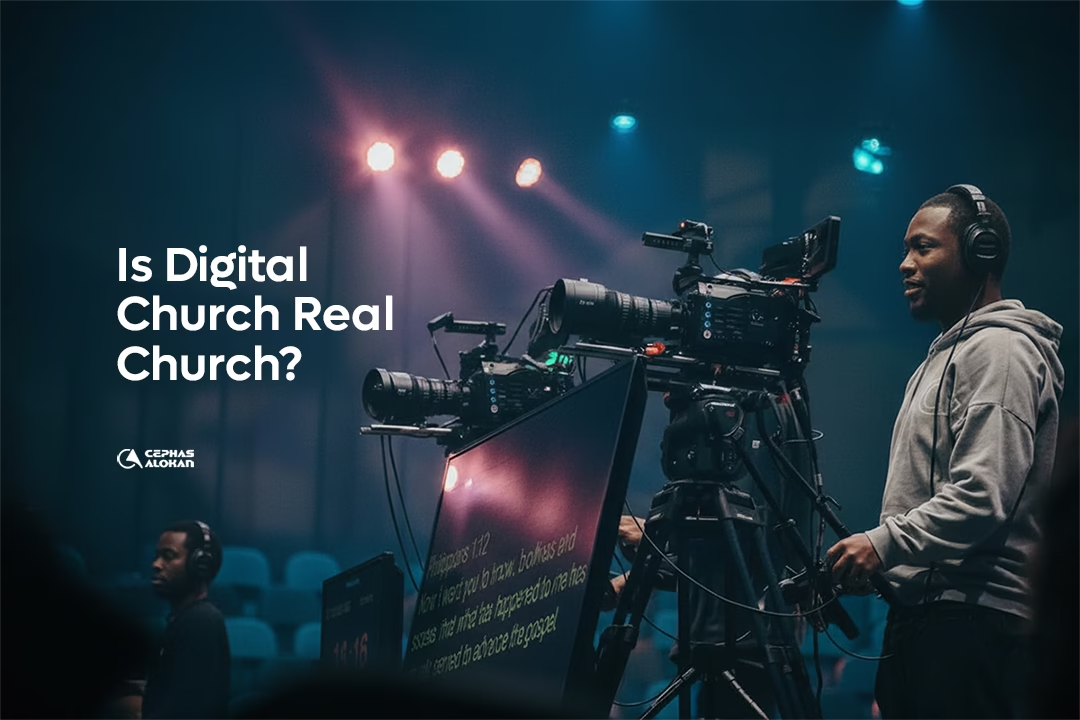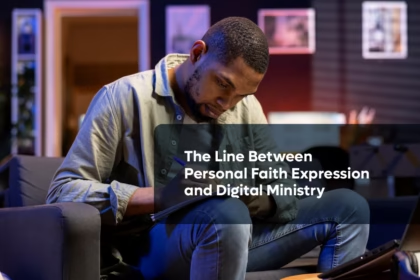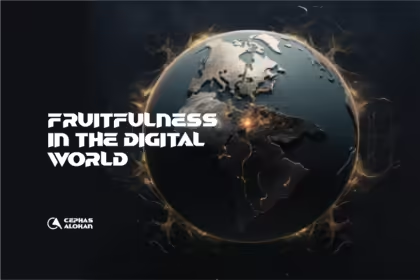The digital church debate has exploded across social media, and it’s getting heated. I’ve watched respected ministers passionately argue that there’s no such thing as digital church, citing scripture after scripture to make their case.
Then I’ve seen equally credible voices champion online church as a legitimate and real church, using those same scriptures to defend their position. Both sides are sincere. Both are using the Bible. And both are talking past each other.
This argument really took off after COVID-19 forced churches worldwide into an unexpected digital experiment. Suddenly, pastors who had never considered online church found themselves streaming services from their houses. And something surprising happened: the church didn’t stop. Community didn’t evaporate.
In many cases, congregations discovered that being the church could continue even when physical buildings were locked down. Some pastors saw possibilities they’d never imagined—that perhaps the church itself could exist in digital spaces.
Now, years removed from lockdowns, the conversation has only intensified. Was the digital pivot just a crisis response, or did it reveal something significant about what church actually is? Should we return entirely to pre-pandemic patterns, or has our understanding of church itself fundamentally shifted?
Let me make an attempt to explain this debate and create some balance. Because I believe the truth isn’t found in either extreme but in understanding how physical and digital church can coexist without compromising what scripture actually requires of the church.
Why Digital Church Is Real Church
The legitimacy of digital church becomes clear when we examine what the church actually does. If the core functions of the church can be performed through digital tools and platforms, then the medium doesn’t negate the ministry.
The church has always been adaptive. From house gatherings under Roman persecution to Gothic cathedrals designed to inspire awe, from circuit riding preachers to radio broadcasts, the church has consistently leveraged available technology to fulfill its mission.
Digital platforms simply represent the next frontier of this adaptive calling.
Consider the five essential functions that define church life. Each one can be meaningfully facilitated through online church platforms:
- Fellowship
This happens when believers share life together. Acts 2:42 describes the early church devoting themselves to teaching, fellowship, breaking bread, and prayer.
Today’s digital tools enable real-time fellowship through different livestream digital tools and interaction through video calls, small group discussions in breakout rooms, prayer partnerships via messaging apps, and ongoing relational connectivity through social platforms. These aren’t pale imitations of fellowship but genuine expressions of it
- Training Outpost
The church is meant to equip believers for spiritual maturity; this has always been central to the church’s mission. Ephesians 4:11-12 speaks of gifts given to equip the saints for ministry and build up the body of Christ.
Through video teaching libraries, live bible study sessions, interactive discipleship courses, mentorship platforms, and theological training modules, the digital church can effectively facilitate biblical education and spiritual formation at a scale previously unimaginable.
- A Family
This is what happens when the church becomes the household of God. Ephesians 2:19 reminds us we’re no longer strangers but fellow citizens and family members.
Digital communities can offer pastoral care through community platforms, group interaction, scheduled video check-ins, emotional support via personal chats, accountability relationships sustained across distances, and the profound sense of belonging that characterizes true family life.
- Mission Outpost
Evangelism is the heartbeat through which the church was commanded and established. The Great Commission in Matthew 28:19 calls us to make disciples of all nations.
Digital platforms obliterate geographical barriers, transcend cultural boundaries, and reach across socioeconomic divides that might limit physical outreach. A single live stream can simultaneously reach someone in rural Montana and urban Manila, or digital evangelism content can reach thousands and millions of lives where we never expected
- Organization
Organizational structure remains necessary for effective ministry. First Corinthians 14:40 instructs that all things be done decently and in order. In Acts 6, we see how the church was then organized in serving tables and in the ministering of the word
Digital systems streamline administrative functions, resource management, communication networks, and the organizational coordination that keeps ministry moving forward efficiently.
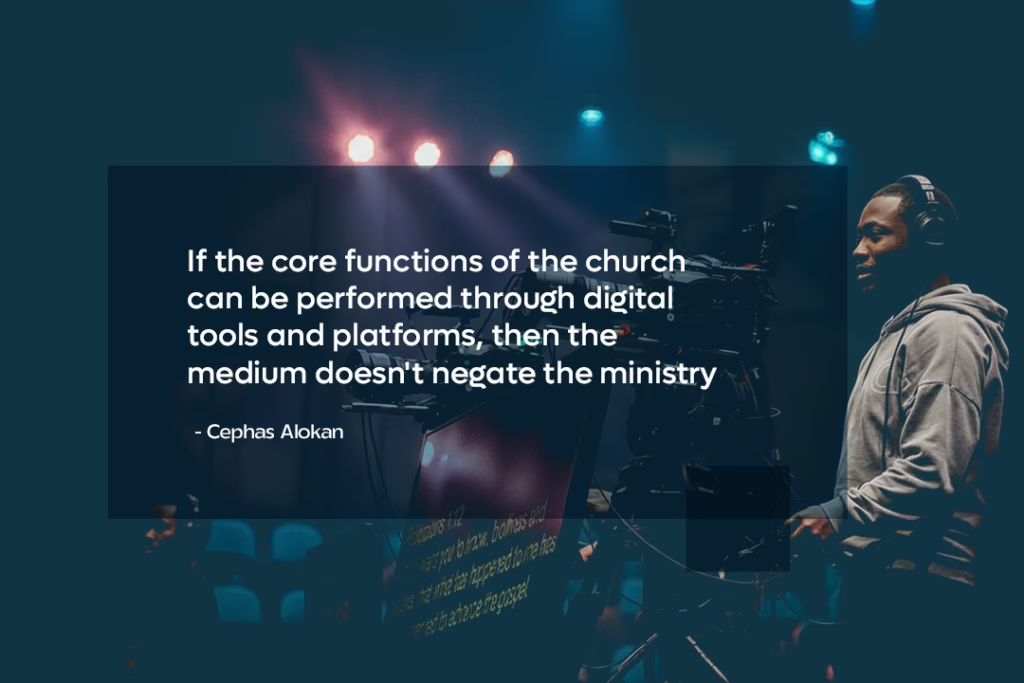
The Non-Negotiable: Physical Presence Still Matters
Here’s where many digital church advocates go too far. While I affirm digital church as a powerful ministry tool, I cannot endorse the idea of a standalone digital church existing independently of physical community. Scripture is unambiguous about this.
Hebrews 10:24-25 doesn’t leave room for interpretation: “Let us consider how to stir up one another to love and good works, not neglecting to meet together, as is the habit of some, but encouraging one another, and all the more as you see the Day drawing near.” The emphasis on meeting together is deliberate and physical. The Greek word used here implies bodily assembly, not virtual connection.
There’s also something about corporate worship in a shared physical space that generates collective spiritual energy. When voices join together in one room, when bodies kneel in unified posture, when the atmosphere becomes charged with collective focus on God, something happens that transcends what individual participation through screens can produce.
The Sweet Spot: Digital as Extension
This is where the conversation gets practical. Digital church should function as an extension of physical church, not a substitute for it. Think of it as amplification rather than replacement. When positioned correctly, online church becomes a strategic tool that:
- Extends your congregation’s reach beyond physical walls, allowing a local church to have global impact while maintaining local roots.
- Maintains connection with members temporarily unable to attend due to illness, travel, caregiving responsibilities, or other life circumstances that prevent physical presence.
- Provides midweek discipleship and community touchpoints between Sunday gatherings, keeping spiritual momentum alive throughout the week.
- Creates accessible entry points for seekers who might be hesitant to visit a physical location, lowering the barrier to initial engagement with your community.
- Enables specialized ministries that transcend geographical limitations, like support groups for rare struggles or theological training for international leaders.
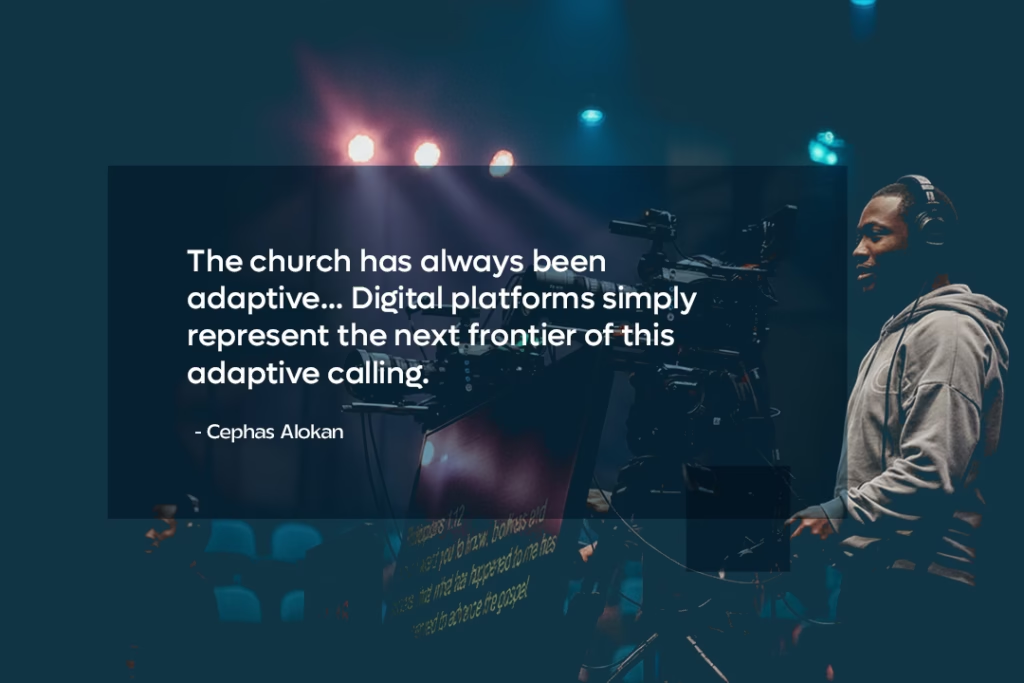
Why Churches Fail at Digital Ministry
Many churches underutilize digital platforms because they lack theological clarity about the proper role of online church. Some reject it outright as inauthentic, treating it as a necessary evil during emergencies but not a legitimate ministry avenue. Others embrace it superficially, treating it as mere convenience rather than strategic opportunity.
The churches that thrive recognize digital church as both legitimate and limited. It’s a powerful extension of physical community but cannot entirely replace the incarnational nature of Christian witness. Just as Christ took on flesh and dwelt among us in John 1:14, the church is called to be a tangible, physical presence in the world while also extending its reach through every available means.
Moving Forward: A Both-And Approach
The future of effective ministry isn’t choosing between physical and digital. It’s integrating both thoughtfully. Churches that embrace online church platforms as extensions of their physical community will find themselves better equipped to fulfill the Great Commission in an increasingly connected world.
This requires intentionality. It means investing in quality production without becoming obsessed with polish. It means creating genuine digital community, not just broadcasting content. It means training leaders to shepherd people they may never meet face-to-face while still prioritizing physical gathering as the anchor of church life.
The question isn’t whether digital church is real. The question is how we can best leverage digital tools to strengthen the timeless mission of the church: making disciples, building community, and glorifying God in every sphere of life, both online and offline.
When we get this balance right, we don’t have to choose between relevance and reverence, between innovation and faithfulness. We simply become more effective at the calling that’s been ours from the beginning.


